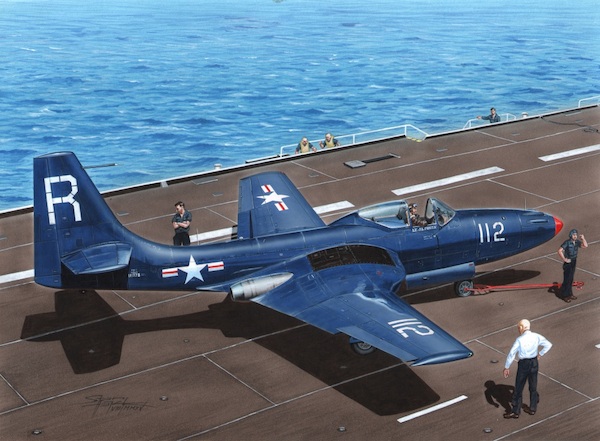
- aviationmegastore.com
- aviationoutletstore.com
- Ship to United States
Quick Search
Aviation Shop
categoriesPublic holidays
Amended or confirmed operating hours of the Luchtvaart Hobby Shop in Aalsmeerderbrug on the following dates:
Aviation Megastore website is available without limitations. Orders are processed during shop operating hours.
| Sa | 27 Apr. | Closed: King's Day |
| Th | 9 May | Closed: Ascension Day |
| Mo | 20 May | Closed: Whit Monday |
Frequent buyers programme
Collect Megapoints for Megavouchers
Read the conditions...
Hold & Store service ©
Aviation Megastore offers unique Hold & Store service © for internet customers that wish to combine several individual orders to one single shipment, reducing the overall shipping cost significantly.
Read more...
McDonnell FH-1 Phantom "First US Navy Jet fighter"
Product code sh72332
€ 14.83
Scale 1 : 72
Publisher/Brand Special Hobby
Category Scale Modelling
Subcategory Scale Modelling
Availability Temporarily Out of Stock.
Click here to be notified when this product becomes available again
This product was added to our database on Friday 7 December 2018.
Your reliable Aircraft Modelling Source since 1989
Product description
The first US Navy's jet aircraft to be operated from the aircraft carriers and the first jet of the US Marines ever, such could be the description of the airframe produced by McDonnell under designation the FH-1 and which was commonly known as the Phantom, although the same name, just with a number II added, would be later given to another and much more popular jet to seemingly eclipse the historic significance of the original Phantom.
McDonnell company was established in 1939, and in 1940 it received its first contract for a production of subassemblies for other producers. In January 1943, McDonnell's design team was assigned a new job though. The US Navy commissioned a jet fighter aircraft to be built which was to be known as the FD-1, later to be renamed to the FH-1 in 1947 (in US Navy system, the letter D denoted the Douglas company)
The team, led by K.Perkins, put forward a concept of a straight wing monoplane of all-metal construction. The power plants were supplied by Westinghouse. Originally, before the whole concept of the aircraft became clear enough, as many as eight engines were considered per each machine. Eventualy, a more conventional design with two powerplants on either side of the fuselage was accepted. The machine was fitted with six machine guns in the nose section and the Phantom military nickname was chosen. The type's Model 19 powerplants proved to lack the necessary performance and were quite unreliable, too. However, the prototype XFD-1 machine begun its taxiing tests fitted with this type of powerplants, to be more precise it was fitteed with just one engine. On 26 January 1945, an accidental hop occured during taxiing which was considered the type's very first take off. The flight tests went on until 1 November 1945 when the plane crashed, killing its pilot, W.Burke. It was hard times for the company, indeed. The original order calling for 100 examples of the aircraft was cut down to just 30 airframes by the end of the war, however, eventually, as many as 60 airframes were requested. The flight tests went on with the second prototype, during these tests the very first landing and consequent take off from an aircraft carrier occured, making the Phantom the very first naval jet aircraft to achieve this milestone.
The production machines differed from the prototypes by having their tail fins squared off, the wind shield was simplified, fuel tanks enlarged and a provision for another tank carried under the belly was also made. The very first production airframes, the FH-1, went to VF-17 unit, making it the first jet aircraft unit of the US Navy. The unit was later re-equipped with the more modern Banshee type and renamed to VF-171. The second Navy unit to operate the Phantom was VF-172, while the first Marines unit to do so was VFM-122, which, led by ace pilot Marion E. Carl received their FH-1s during the Autumn of 1947. It was also this unit where the first FH-1 display, or aerobatics group was formed, named the Marine Phantoms. Another one was established at the Naval Air Test Center at Patuxent River, named the Gray Angels, but was also unofficially known as the Admirals' Group as its members were Rear Admirals D.Galler, E.A. Cruise and A.Soucek.
The FH-1 Phantom did not see very long first line service, it was transferred to Naval Air Reserve units at various Naval Air Stations throughout the whole US rather soon and by 1955, the Phantom had retired from active service. In 1964, two airframes and another one to supply spare parts were used to civil jet pilot training by Progressive Aero Inc. company.
Decals for four U.S. Navy machines:
FH-1 Phantom, R 112 (BuNo 111778) VF-17A, Lt J.L. Fruin, USS Franklin Delano Roosevelt (CVB-42), March 1949.
FH-1 Phantom, 122 (BuNo 111785), VF-17A, carrier deck suitability tests, USS Saipan, May 1948.
FH-1 Phantom,101 ( BuNo 111799), VF-17A, Capt. W.N. Leonard , USS Coral Sea (CVB-43), 18 May 1948.
FH-1 Phantom, 109, (BuNo 111786), VF-17A LCDR R.I. Clinke, USS Franklin Delano Roosevelt (CVB-42), March 1949.
Detailed and highly accurate model
four U.S. Navy carrier based machines marking options
accurate decals with full set of stencils
Q72325 Resin wheels also available separately to improve the detail levels of the kit
- aviationshopsupplies.com
- aviationmegatrade.com
© 1989–2024 Luchtvaart Hobby Shop B.V.
